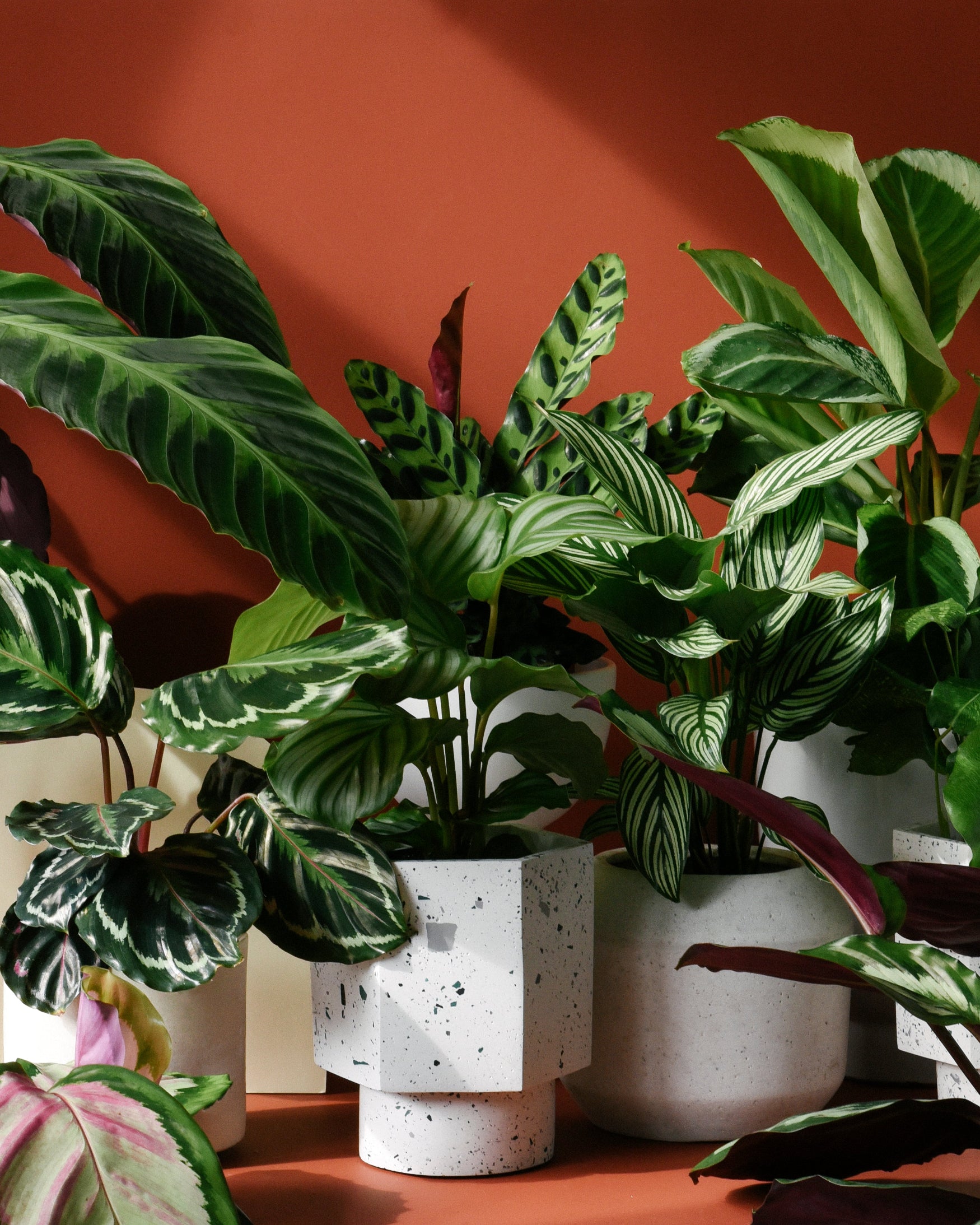by Plant Circle
Plant care: Hard water
What hard water really is, how you identify it, and how it affects your plants!
Depending on where in the world you are, you’ll have a different quality of tap water, but for the purpose of this blog post, we will be talking about the quality of tap water here in Berlin! And as you may know, the tap water in Berlin has quite a reputation, and unfortunately it’s well deserved! For those of you who don’t know, Berlin’s tap water is notoriously hard… but what does that even mean? Let’s take a closer looks at what the term ‘hard water’ really means in practice for both you and your plants!
What is hard water? By definition, this type of water contains an appreciable quantity of dissolved minerals like calcium and magnesium, and the easiest way to find out whether your tap water is too hard for your plants, is by observing your plants, specifically the top layer of the soil. Calcium residue is often clearly visible on the top of the potting mix in your potted plants in form of white residue.
Another easy, yet slightly more scientific, way of determining the hardness of your water is to measure the pH value of the water using measuring strips. Anything above 8.5 pH value is considered hard. So let’s say that you’ve measured the pH of your water, and you’ve found out that it is indeed above 8.5… how does that actually affect you and your plants? Well, first of all, hard water does not possess any health risks to humans. At worst, you might notice a slightly bitter taste, and it can definitely dry out your skin and hair, as Berliners know well!
The bitter taste can impact the flavour of your tea or coffee, and we’re sure we don’t have to mention what the effects of dry skin are! Luckily, both can be remedied quite easily by installing a water filter on your shower and/or on your sink.Here you can easily see the difference between distilled water and hard, Berlin water on a pH strip. Number one is distilled water from a dehumidifier, number two is from a Brita filter, and the third is your standard Berlin tap water!
Now, it’s not that we don’t care about the taste of your tea of the lustrousness of your locks, but let’s get back to what having this type of water means to your plants! In general, there isn’t a single plant that actually likes hard water, however some tolerate it better than others. But for the sake of your plants, let’s choose to focus on the plants that don’t tolerate it well, and how you can actually tell just by looking at them!
As mentioned earlier in the post, the first thing you’ll see is a calcium carbonate and salt build up on the top layer of your potting mix, which suggests that your tap water is too hard. This alone is problematic, as all of that salt and calcium will start building up around the roots too, and will eventually start to repel water. Doesn’t sound good, does it? So how do you fix that? You start by removing the top layer of the soil, or completely changing the potting mix, and switching to filtered, distilled, osmosis, or rainwater. You can also try to flush it out by giving your plant a shower. This of course works best if your shower has a filter installed on it already!
Another common sign that your water is too hard on your plants are brown, crispy, burnt edges of their leaves. This happens very often to plants from the family Marantaceae, like Maranta and Calathea, with the latter being the more sensitive to hard water. Unfortunately a popular portable water filter, like Brita, won’t be enough in this case… these absolute divas will only truly thrive if you water them with distilled or osmosis water!
Another group of plants that will suffer terribly when being watered with water that’s too are carnivorous plants. These guys are simply unable to produce the juice they use to trap insects when the water is too hard, which results in them being unable to get their nutrients to survive. Under no circumstances do you want to water them with anything other than distilled water!
Besides the aforementioned species, the health of any plant can suffer the consequences of being watered with hard water. If you spot burnt edges or calcium buildup, you’ll know it’s either the result of the water in your home being too hard, or a lack of sufficient humidity in the room, and you can take immediate steps to remedy the situation.
With this knowledge, growing happy Calatheas or carnivorous plants shouldn’t be an issue anymore!







